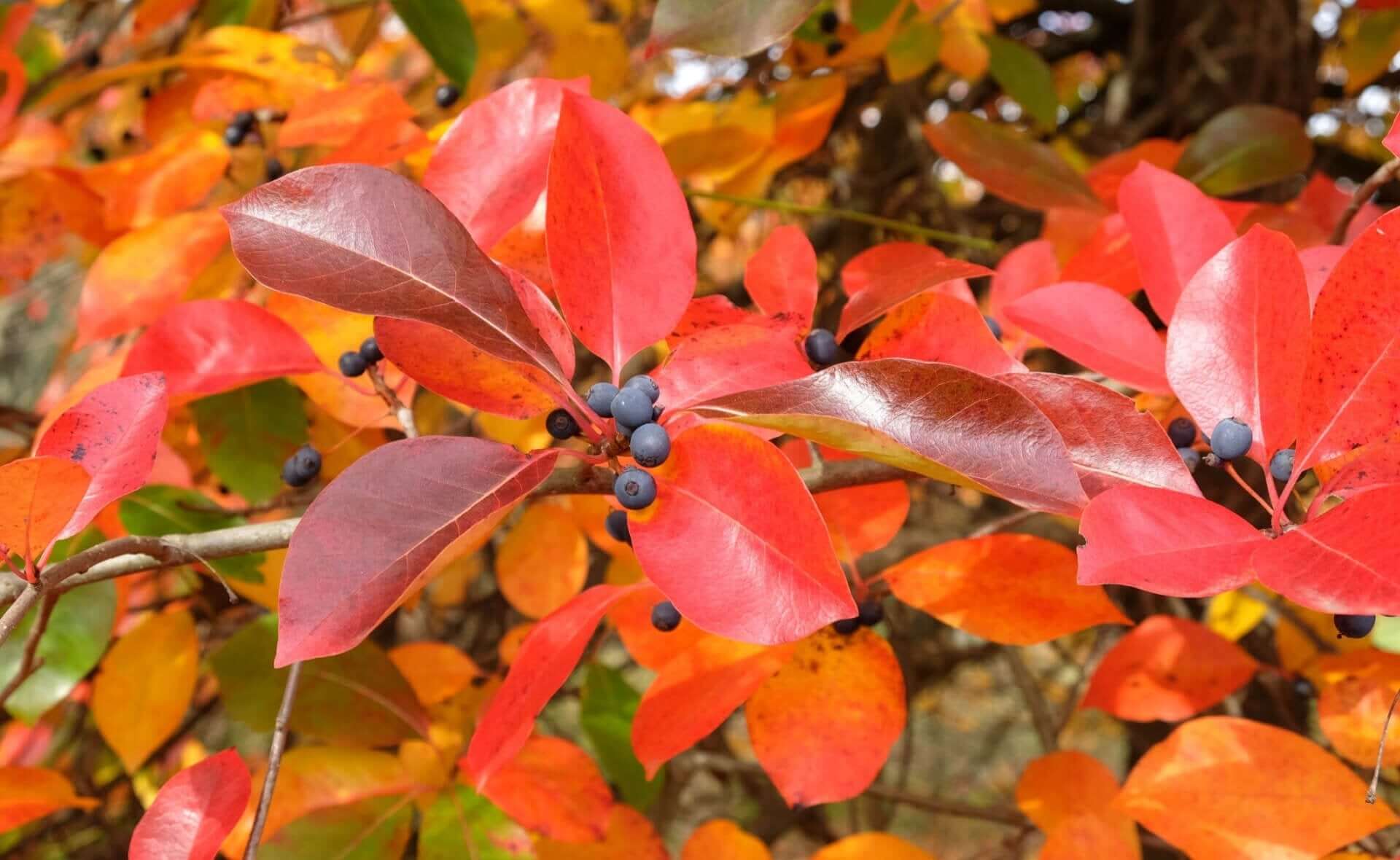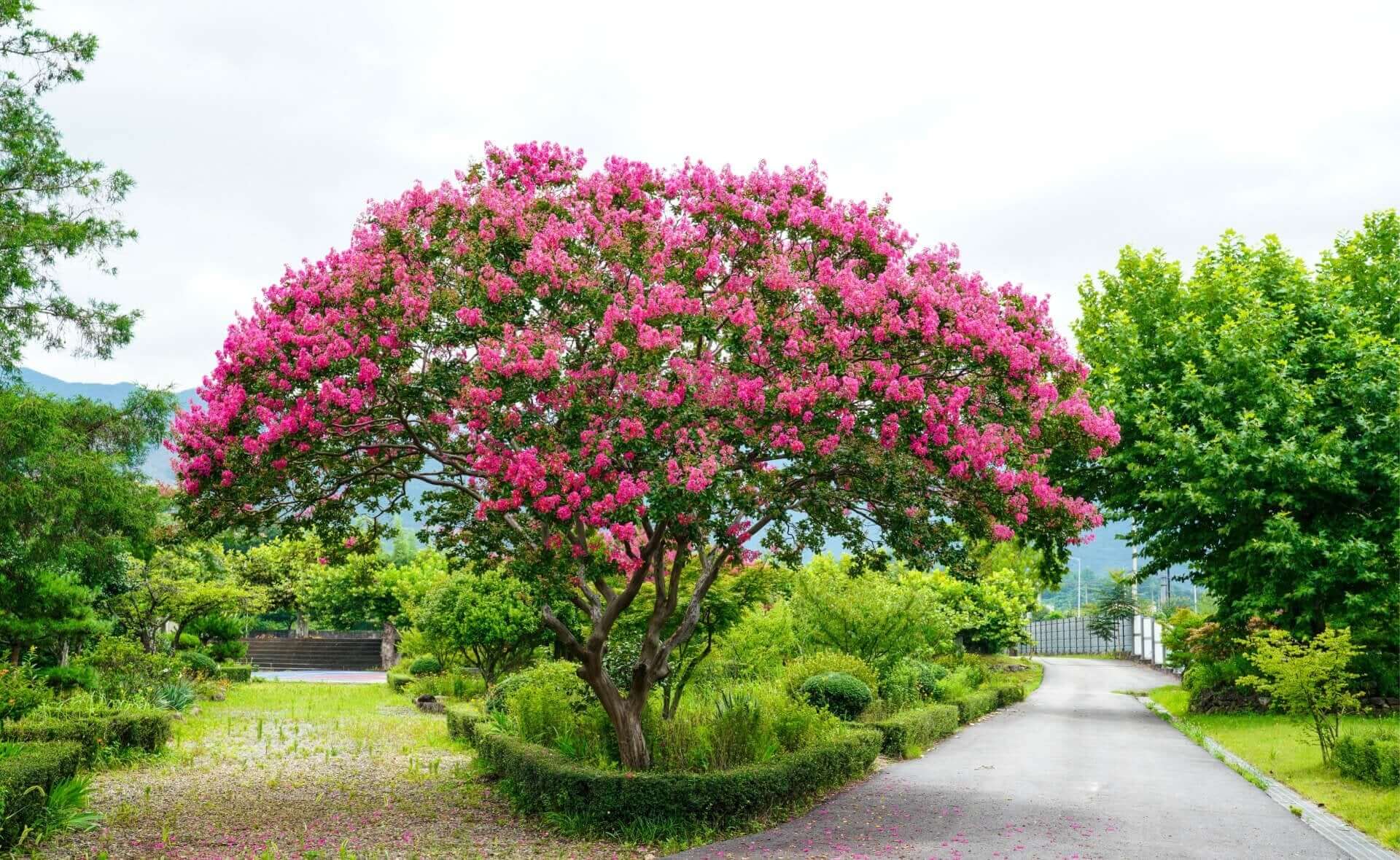A Closer Look At Black Gum Trees
The Black Gum Tree (Nyssa sylvatica), which goes by the names Black Tupelo and Tupelo, originates from the eastern regions of the United States. The grandeur of these trees reveals their distinct features and ecological value which demonstrate nature's amazing capacities. The exploration will examine the trees' amazing features including their unique berries and colorful fall leaves together with their full-grown size and essential support for wildlife.
Berries and Reproduction
The tree's small dark berries that resemble fruits stand out as one of its most prominent features. Female trees bear fruits which serve as an essential component of their reproductive system. The tree's name comes from its berries which transform from an interesting mix of green, blue, and purple shades to a shiny black or dark purple tone when mature. Successful fruit production depends on the presence of both male and female trees due to the tree's unique pollination system. During spring months male trees produce greenish-yellow flowers that release pollen into the atmosphere and remain unnoticeable to the eye. The wind transports pollen from male trees to female trees which produce different berries. The pollination process supports species continuation while enhancing the tree's visual charm through the landscape transformation from flowers to berries which displays subtle yet beautiful hues.
Black Gum Trees Have Vibrant Fall Foliage Colors
The trees are most renowned for their breathtaking fall foliage display. These trees experience a remarkable transformation as autumn brings shorter days and falling temperatures. The forest turns into a breathtaking spectacle when tree leaves transform into brilliant shades of red, orange, and purple. People admire vibrant fall foliage because it makes these trees popular choices for landscaping and urban planting projects. The brilliance of fall foliage colors changes according to conditions like the tree's placement and environmental factors such as dirt health and climate. Trees show more vibrant autumn colors in areas that experience cooler temperatures alongside sufficient sunlight. The seasonal display draws attention from people while acting as a magnet for different wildlife species.
Size at Maturity
Despite their slow growth rate these trees achieve impressive dimensions when they reach full maturity. Trees commonly grow to heights between 30 and 50 feet while certain extraordinary examples surpass 100 feet. Soil quality and water availability along with competition from other plants determine their growth rate. Over time trees attain characteristic pyramidal and oval forms as their branches stretch outwards. Due to their moderate size these trees fit well into different landscaping needs ranging from residential gardens to public parks. The trees attract attention with their appealing shape and bright foliage which makes them excellent choices for providing shade along with visual interest and wildlife habitat.
Black Gum Trees Help At Supporting Wildlife
The trees are champions in supporting wildlife. Human consumption does not usually extend to these berries while numerous animals especially birds depend on them for sustenance. During fall and winter months Cedar Waxwings together with American Robins and Northern Flickers depend on tree berries to fulfill a large portion of their dietary needs. The berries' high-fat content delivers crucial energy to birds which helps them endure severe winter weather conditions. These trees provide essential food sources while creating safe nesting spots for various wildlife species. Birds and small mammals find protection in the dense foliage which shields them from predators and protects them from harsh weather conditions.
The flowers and nectar produced by these trees is a magnet for pollinators. In wetland areas, The trees are precious. These trees have evolved to flourish in both saturated and arid soil conditions which makes them indispensable parts of riparian ecosystems. These settings work to ground soil effectively while stopping erosion and act as natural filters to remove water pollutants which results in better water quality. Trees provide ecological benefits partly because they function as carbon sinks through carbon sequestration. These trees stand out as major carbon storage elements in forest ecosystems because of their extended lifespan and their capacity to retain carbon within their wood.
The trees serve eastern North American ecosystems as remarkable and valuable species because of their distinctive berries and vibrant fall foliage combined with moderate mature size and essential wildlife support. The trees beautify our natural surroundings and perform essential ecological roles including wildlife support through food and shelter as well as carbon storage and water purification. While we admire black gum trees for their hardiness and aesthetic appeal we must understand the need to protect these stunning trees so future generations can also experience their benefits.



